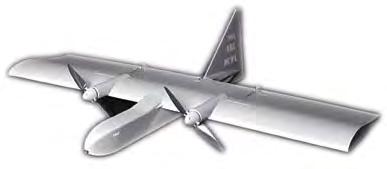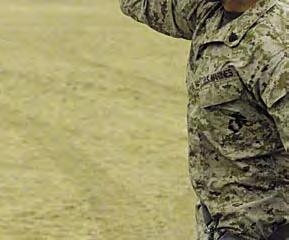
4 minute read
Submarine Force Tests UAV Technology to Enhance Force Protection


Advertisement
Submarine Force Tests UAV Technology UAV Technology to Enhance Force Protection


Two Marines prepare to launch a Dragon Eye, the Marine variant of the Naval Research Laboratory’s ATR UAV.

In February, the Submarine Force conducted a demonstration at Naval Submarine Base Kings Bay, Ga. to test the utility of a new type of Unmanned Aerial Vehicle (UAV) in supporting force protection. Based on the success of that trial, submariners are excited about the potential advantages of UAVs in force protection and the significant cost savings offered by this technology.
According to Cmdr. Tom Armstrong, the anti-terrorism force protection officer on the staff of Commander, Naval Submarine Forces (COMNAVSUBFOR), flying UAVs to enhance situational awareness has been going on for quite some time. “The Marines have a version of the UAV called ‘Dragon Eye’ that’s been used very successfully in Iraq,” he said. “As our submarines often have to transit in and out of port through restricted waters, the ability to foresee any problems would be very beneficial from a force-protection standpoint.”
During the demonstration at Kings Bay, a prototype UAV was launched and controlled by force-protection personnel ashore to search out the waters ahead of a submarine as it entered port. The small airplane, weighing in at approximately five pounds, can be disassembled into five pieces and be stored in a small suitcase, thus making it portable and easy to take anywhere it’s needed.
“The beauty of UAVs – as other military users have found – is that they are economical, portable, and reliable,” said Armstrong. “Having a small, low-cost, and easy-tooperate platform that can provide an escort commander, submarine commander, or security forces a heads-up before potential trouble is very attractive.”
Developed by the Naval Research Laboratory (NRL), the Advanced Tactical Recce (ATR) aircraft can fly at altitudes ranging from 50 to 10,000 feet over a range of 40 kilometers – approximately 50 minutes flying time – on a single battery charge.
UAV’s can be used in a number of different ways, but their primary role for the Submarine Force would be for reconnaissance and photographic surveillance in support of force protection. “In addition to using UAVs for over-flight of waterways, they can survey fence lines on large bases,” Armstrong explained. “Places like Bangor and Kings Bay have extensive fence lines in the woods. A UAV equipped with thermal or night vision capabilities could be used to

check those fence lines much quicker and cheaper than driving a car around.”
Because of its ultra-quiet electric motor and small size, the new UAV is very stealthy. Another advantage is the versatility of the vehicle. According to Armstrong, it can be flown in all kinds of weather and can be launched easily by hand. “Moreover, it can be flown under the guidance of the global positioning system (GPS),” he said. “We just program what route we want it to fly, and it doesn’t matter if it’s night or day, good weather or bad. We can also launch the UAV from a submarine at sea or from land depending upon the available range.”
Formally acquiring UAVs for submarine force protection is still under study, but Armstrong is optimistic that this technology

U.S. Navy photo
will find a large role in the future fleet. “This affordable surveillance tool offers great potential benefits and savings to the Submarine Force, and I hope we’ll be able to take full advantage of this new technology very soon.”
Petty Officer 2nd Class Shaw serves in the Public Affairs office for COMNAVSUBFOR.
(below) A Marine prepares to launch the Dragon Eye.

(above) A view of Naval Submarine Base Kings Bay, Ga., from an unmanned aerial vehicle (UAV) flown in February 2005 during an operational field test of the small aircraft’s surveillance capabilities. UAVs are being considered for possible force protection uses at bases like Kings Bay and for their potential to scout ahead for possible threats to submarines entering and leaving port.

(right) Seen from a UAV overhead, USS Newport News (SSN-750) comes pierside at Naval Submarine Base Kings Bay, Ga., during a demonstration of the aircraft’s performance capabilities.


U.S. Navy photo










